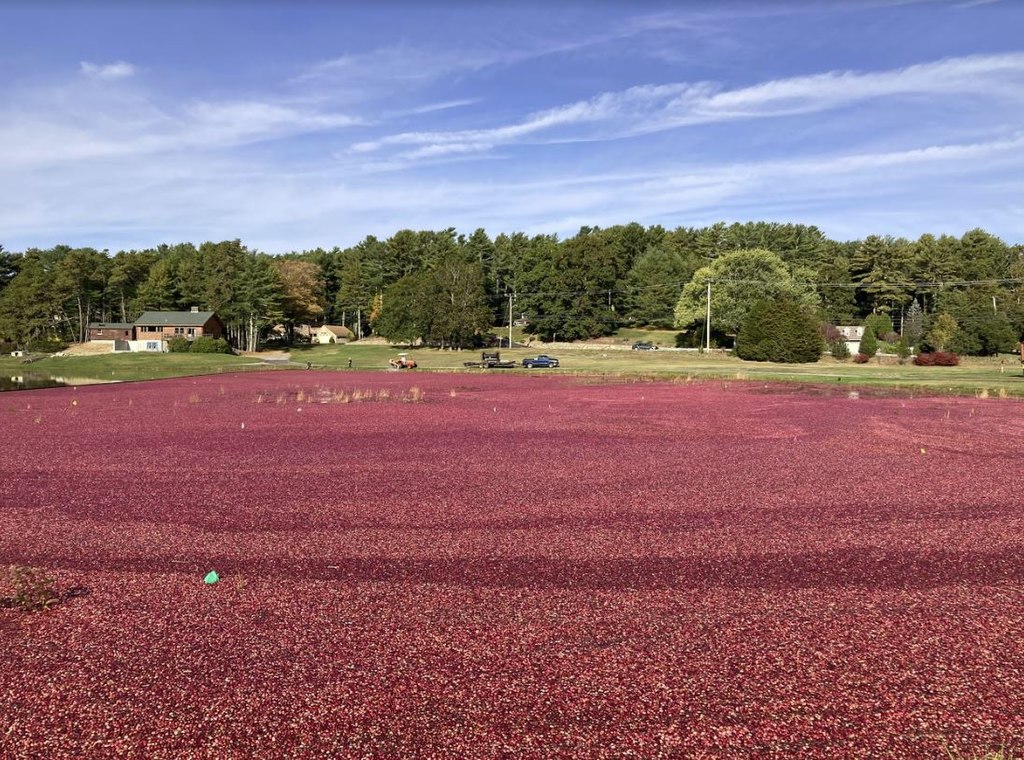Thanksgiving’s buoyant bitter berry boasts health benefits

COLUMBIA, Mo. — Cranberries have long been considered the crown jewel of Thanksgiving dinners, says University of Missouri Extension horticulturist David Trinklein.
In a press release, Trinklein said, “This comes at somewhat of a surprise, since cranberries likely were not served at the first Thanksgiving in 1621.”
Although the pilgrims undoubtedly were aware of the bitter berry, which was indigenous to the area, cranberries probably were not used as a food source until later. Early colonists likely used cranberries first for medicinal purposes, he says.
For most of the year, cranberry keeps a low profile. But during the holidays it shines and sparkles as dazzling as its ruby color. Last year, the United States produced more than 400,000 tons of the berry. An estimated 25% of cranberry consumption occurs from Thanksgiving through Christmas.
Cranberry, blueberry and American grapes are North America’s only native fruits grown commercially. Cranberries are native to the acid bogs of New England and parts of Canada.
The plants are evergreen and trail along the ground,. producing short, vertical shoots as they spread. The shoots later flower and produce fruit for many years. The fruit turns from white to red as it ripens and matures.
Commercial production of cranberries began in 1816, when the Revolutionary War veteran Henry Hall planted the first bed, Trinklein says. A surge in cranberry growing followed, although many people did not understand the plant’s unique needs. Cranberries are finicky about their growing conditions. They do not like heat. Either they must grow in acid bogs with pH levels between 4.5 and 5 or in beds constructed of sandy soil with artificially maintained pH levels.
A common misconception is that cranberries grow in standing water, Trinklein says. This is not the case. At harvest time, growers flood beds with water to cover the vines to a depth of six inches. A mechanical harvester then churns the water to sever the fruit from the vine. The buoyant berries float to the top and gather in the corner of the bed. A conveyer belt picks them up and takes them to the processing plant.
Cranberries also may be dry harvested. A machine with teeth combs the berries from the vine and deposits them in a corner.
A cranberry is only as good as its bounce, says Trinklein. In the past, berries were rolled down a flight of steps. Top-grade, firm berries bounced to the bottom. Damaged or second-rate berries remained on the steps. Today, machines separate high-quality berries for sale from lesser berries destined for juice or sauce processing.
Cranberry isn’t just another pretty face at holiday dinners. The pigment that gives berries their color has an antioxidant believed by some to have cancer-fighting properties. Medical professionals promote it for heart health, digestion and all-around wellness. Cranberry juice also gets the nod from doctors for preventing, but not curing, urinary tract infections because it contains a compound that prevents bacteria from attaching to the bladder wall.
Miss Clipping Out Stories to Save for Later?
Click the Purchase Story button below to order a print of this story. We will print it for you on matte photo paper to keep forever.

